Home / Services / Cargo Services
Cargo Services
Conventional Cargo & Warehouse Services

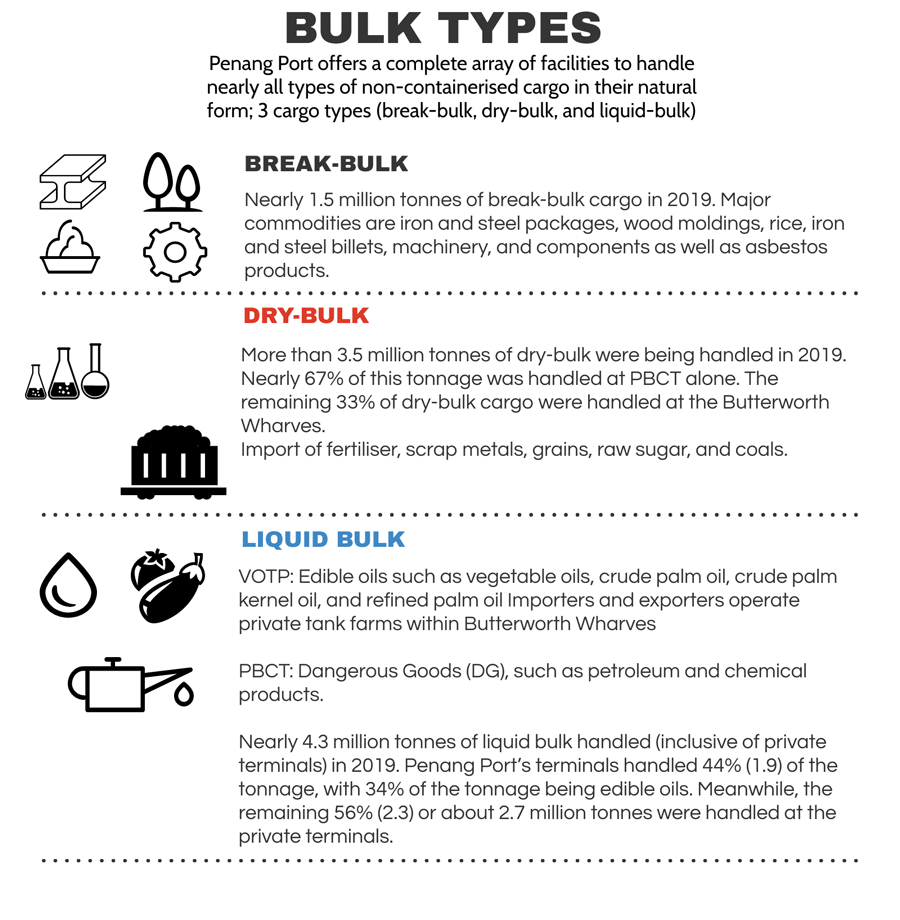
Cargo handling has been the backbone of Penang Port; since the first settlement established by Captain Francis Light in 1786. Today, after more than four centuries of growth and development, Penang Port flourished as a trading center and a free port.
From handling 1.25 million tonnes of cargo in 1950 and 2 million tonnes in 1960, Penang Port has rapidly grown to handle 10 million tonnes of cargo.
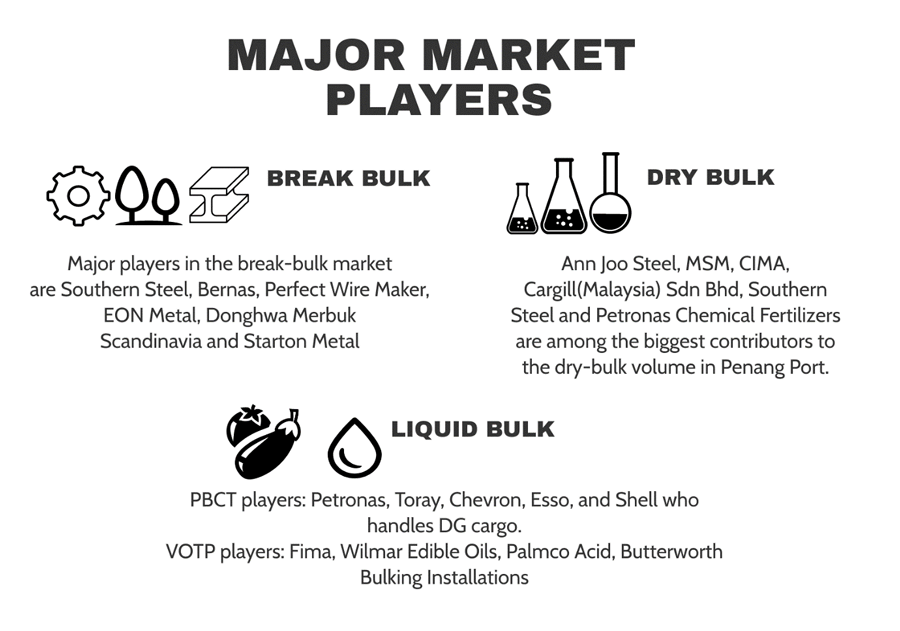 BREAK-BULK
Butterworth Wharves
BREAK-BULK
Butterworth Wharves
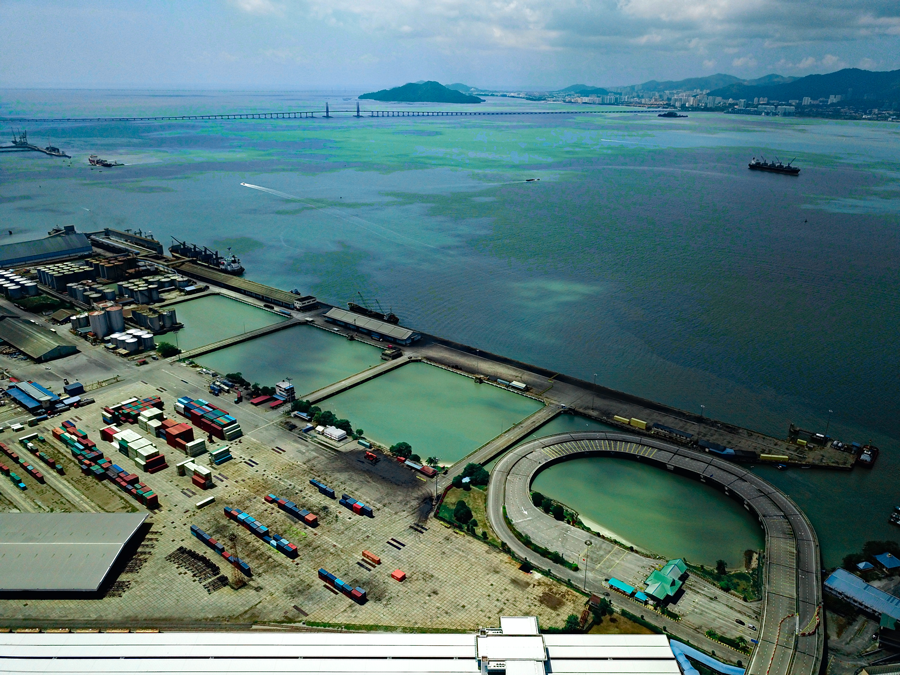
|
BERTH
|
DEPTH
(In METERS)
|
MAXIMUM
DWT
|
MAXIMUM ARRIVAL DISPLACEMENT
(In TONNES)
|
|
W1
|
10
|
25,000
|
40,000
|
|
W2
|
10
|
25,000
|
40,000
|
|
W3
|
9
|
25,000
|
40,000
|
|
W4
|
9
|
25,000
|
40,000
|
|
W5
|
9
|
25,000
|
40,000
|
|
W6
|
9
|
25,000
|
40,000
|
Butterworth Wharves comes equipped with various types of cargo handling equipment such as forklifts, prime movers, and trailers to expedite operations. Linkages to the national highways and the national railway grid provide excellent connectivity to its hinterlands. Penang Port’s break-bulk handling performance standards are ISO certified.
DRY-BULK
Under the Third Malaysia Plan (1975 - 1980), a dedicated bulk cargo terminal was built to handle both dry and liquid bulks. Named the Prai Bulk Cargo Terminal or PBCT in short. PBCT, which is about 33.99 Hectares in size, offers nearly 111,000m2 of covered warehouse space (both leased and rented) and about 4.6 Hectares of open stockpile area. It is also equipped with 4 mobile Harbour cranes at the Wharves side to expedite the discharging and loading of cargo. The design characteristics of the berths in PBCT are as follows:
|
BERTH
|
DEPTH
(In METERS)
|
MAXIMUM
DWT
|
MAXIMUM ARRIVAL DISPLACEMENT
(In TONNES)
|
|
BCT1
|
11
|
50,000
|
66,667
|
|
BCT2
|
11
|
25,000
|
33,300
|
|
BCT3
|
11
|
50,000
|
66,667
|
|
INNER BERTH
|
7.5
|
10,000
|
13,333
|
|
DG BERTH
|
11
|
25,000
|
33,300
|
Prai Bulk Cargo Terminal
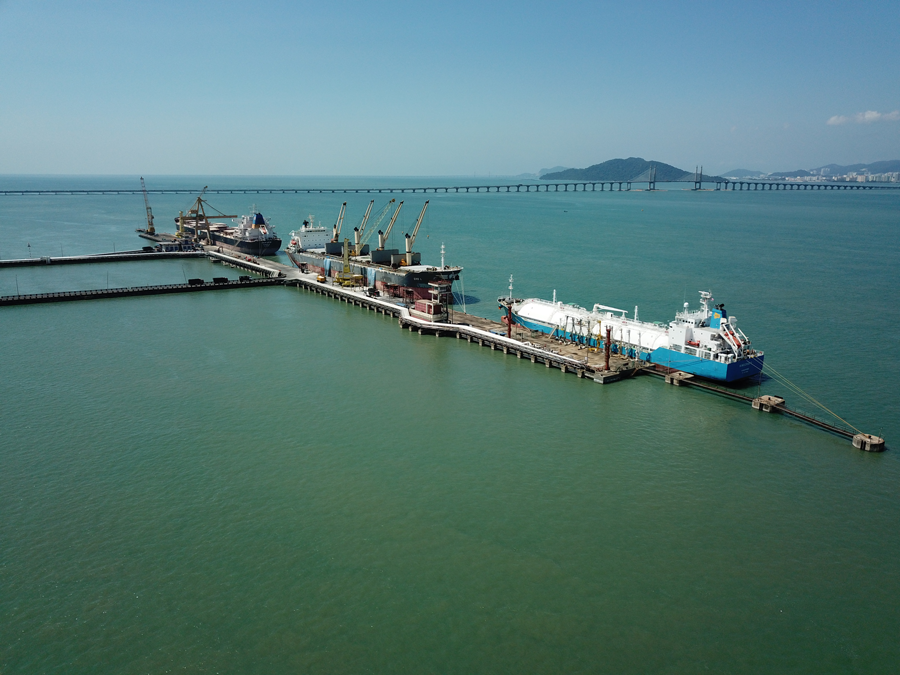
|
BERTH
|
DEPTH
(In METERS)
|
MAXIMUM
DWT
|
MAXIMUM ARRIVAL DISPLACEMENT
(In TONNES)
|
|
BCT1
|
11
|
50,000
|
66,667
|
|
BCT2
|
11
|
25,000
|
33,300
|
|
BCT3
|
11
|
50,000
|
66,667
|
|
INNER BERTH
|
7.5
|
10,000
|
13,333
|
|
DG BERTH
|
11
|
25,000
|
33,300
|
The development of PBCT encouraged the establishment of petrochemical industry in the Prai Industrial Zone - with organizations such as Toray, Acidchem, and MECI being the major players located and operating in PBCT– primarily handling the DG cargo.
Petronas Chemical Fertilizers operate the Urea Export Depot at Butterworth Wharves that has an export capacity of 350,000 tonnes per annum. Import of scrap metal classified as dry-bulk also takes place at Butterworth Wharves as well as PBCT.
Handling standards for dry-bulk cargo are also ISO certified.
Prai Wharves
Prai Wharves (PW) is one of the oldest terminal operated by Penang Port located at the mouth of the Prai River.
Prai Wharves handle Barter Trade cargo from Myanmar and Acheh, Indonesia. Besides, it is also a location for bunker barges to refuel from the tanker lorries. PW offers about 31000 m2 of open stockpile area. Coal import is undertaken at Prai Wharves.
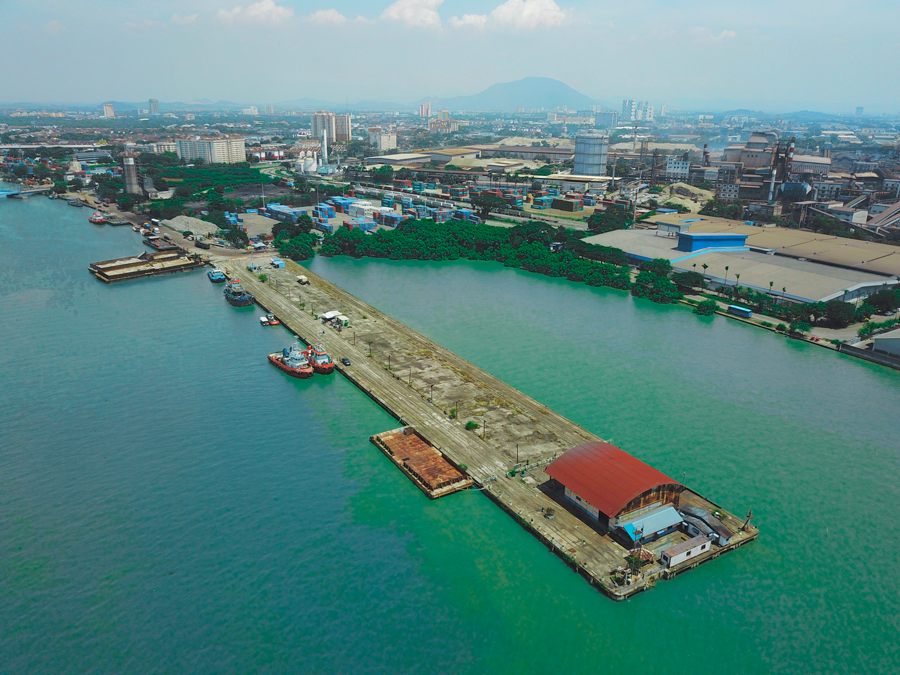
LIQUID-BULK
Vegetable Oil Tanker Pier
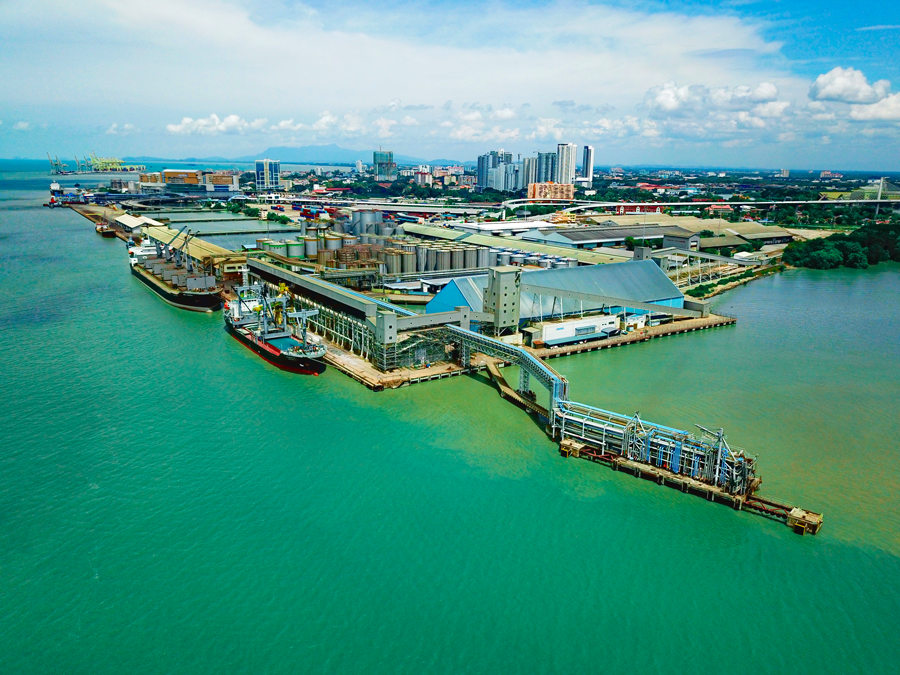
The handling rates for liquid bulk are also ISO certified with a constraint imposed by the pumping capacity of the available pipelines.
Penang Port’s ability to handle various types of bulk cargo has propelled the nation’s growth in tandem with its aspirations. Beginning with the export of commodities such as rubber and tin from the estates and the mines of Northern Malaya, to the import of raw materials and eventual production of goods in the various industrial areas and zones now, Penang Port has seen it all.
Our dynamism and the ability to adapt towards changes have proven to be our boon in venturing forward and keeping up with the constant changing times.